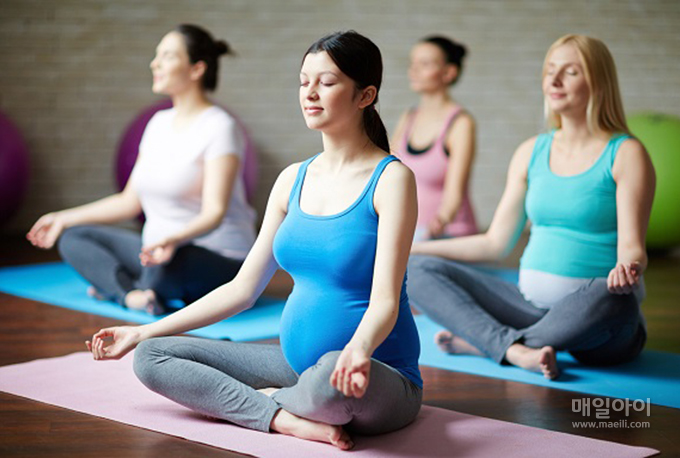Safe Exercises During Early Pregnancy: A Guide for Expectant Moms
Safe Exercises During Early Pregnancy: A Guide for Expectant Moms
Introduction
Staying active during pregnancy is one of the best ways to support your physical and mental health. While exercising during early pregnancy may feel intimidating for some, it is generally safe and beneficial when done correctly. In this blog, we’ll explore the benefits of exercising during the first trimester, the types of exercises that are safe, and tips to ensure you’re working out safely while nurturing your growing baby.
1. Benefits of Exercising During Early Pregnancy
Exercise during the first trimester offers a variety of benefits for both you and your baby:
- Reduces Fatigue: Gentle physical activity can help combat the exhaustion that’s common in early pregnancy.
- Boosts Mood: Exercise releases endorphins, reducing stress and improving overall mental well-being.
- Supports Healthy Weight Gain: Staying active helps you maintain a healthy weight throughout pregnancy.
- Prepares Your Body for Labor: Strengthening muscles and improving endurance can make labor and delivery easier.
- Improves Circulation: Exercise promotes healthy blood flow, reducing swelling and preventing varicose veins.
2. Safe Exercises for the First Trimester
The first trimester is a critical time for your baby’s development, but that doesn’t mean you need to avoid exercise. Here are safe and effective workouts to consider:
A. Walking
- Why It’s Great:
- Low-impact and easy to fit into your daily routine.
- Improves cardiovascular health without overexertion.
- Tips:
- Aim for 20–30 minutes of walking, 3–5 times a week.
- Wear comfortable, supportive shoes.
B. Prenatal Yoga
- Why It’s Great:
- Enhances flexibility, balance, and relaxation.
- Reduces stress and promotes mindfulness.
- Tips:
- Look for prenatal yoga classes tailored to expectant moms.
- Avoid poses that involve lying flat on your back or deep twists.
C. Swimming
- Why It’s Great:
- A full-body workout that’s easy on the joints.
- Helps relieve swelling and back pain.
- Tips:
- Stick to gentle strokes like freestyle or backstroke.
- Avoid diving or jumping into the pool.
D. Stationary Cycling
- Why It’s Great:
- Provides a cardio workout without the risk of falling.
- Strengthens the legs and promotes heart health.
- Tips:
- Adjust the bike seat to ensure proper posture.
- Avoid high resistance or intense intervals.
E. Light Strength Training
- Why It’s Great:
- Builds muscle strength, especially in the core and lower body, to support your growing belly.
- Helps reduce back pain and improves posture.
- Tips:
- Use light weights or resistance bands.
- Avoid heavy lifting or straining.
F. Stretching
- Why It’s Great:
- Improves flexibility and reduces muscle tension.
- Prepares your body for later pregnancy stages.
- Tips:
- Focus on gentle stretches, especially for the hips, lower back, and shoulders.
3. Exercises to Avoid During Early Pregnancy
Certain activities may pose risks during early pregnancy and should be avoided:
- High-Impact Sports:
- Activities like basketball, soccer, or volleyball can increase the risk of falls or abdominal trauma.
- Contact Sports:
- Avoid any sport with a risk of impact, such as boxing or martial arts.
- Excessive Heat Workouts:
- Hot yoga or exercising in high temperatures can lead to overheating, which is dangerous for the baby.
- High-Intensity Workouts:
- Strenuous activities like heavy lifting or intense cardio can cause unnecessary strain on your body.
- Balance-Challenging Exercises:
- Activities like skiing, horseback riding, or mountain biking carry a higher risk of falls.
4. Tips for Safe Exercise During the First Trimester
To ensure a safe and effective workout routine during early pregnancy, follow these guidelines:
A. Consult Your Doctor
- Before starting or continuing an exercise program, talk to your healthcare provider to ensure it’s safe based on your health and pregnancy.
B. Listen to Your Body
- Pay attention to signs like dizziness, shortness of breath, or fatigue. Stop exercising if you feel uncomfortable or lightheaded.
C. Stay Hydrated
- Drink plenty of water before, during, and after exercise to prevent dehydration.
D. Warm Up and Cool Down
- Always start with a 5–10 minute warm-up to prepare your body and end with gentle stretching to cool down.
E. Avoid Overexertion
- Use the “talk test”—you should be able to talk comfortably while exercising. Avoid pushing yourself to the point of exhaustion.
F. Wear Comfortable Clothing
- Opt for breathable fabrics and supportive shoes.
- Consider a well-fitted sports bra for extra comfort.
5. Benefits of Maintaining a Regular Routine
Consistency is key when it comes to reaping the benefits of exercise during pregnancy:
- Better Sleep: Regular exercise promotes deeper, more restful sleep.
- Reduced Discomfort: Staying active can alleviate common pregnancy symptoms like bloating and back pain.
- Stronger Core and Pelvic Floor: Helps your body adjust to the physical demands of pregnancy and labor.
6. Conclusion
Exercising during the first trimester can provide numerous benefits for both you and your baby when done safely. By choosing low-impact activities like walking, yoga, and swimming, and following key safety tips, you can stay active and healthy throughout your pregnancy. Remember, every pregnancy is unique, so always consult your doctor before starting or continuing any exercise routine.
Call to Action
Are you incorporating exercise into your pregnancy routine? Share your favorite workouts or tips in the comments below! For more prenatal health and fitness advice, follow this blog.



Comments